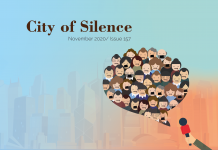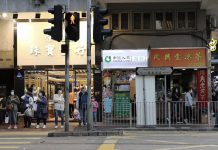Adeline Ko, the picture book author, also noticed that the atmosphere of children’s libraries in Hong Kong is too tense. Most are located near the adult section and so children are not allowed to make too much noise. “It’s natural for a child to laugh loudly at a book they find funny, or to move around, but they can’t,” she says. She recalls visiting a children’s library in Singapore that is designed like a tree-house, so that children can see it as a place where they can read, play and have fun.
A lack of local picture books also affects children’s interest in reading. “In the Fifties, Hong Kong’s children’s books were very strong. The magazine, The Children’s Paradise, was also hugely popular in Taiwan and Southeast Asia. We’ve had our glory days. We just didn’t keep it up,” says Fok.
She says children under four have trouble relating to books that have a different cultural background. For example, Hong Kong children are used to eating rice in a bowl. If they see an illustration of a Japanese rice-ball snack, they may not be able to tell that it is food that can be eaten for a meal.
Ko says cultural relevance is important for children to understand the underlying message of a book. Her book, Waiting, which won the Hong Kong Picture Book Award in 2014, is a story about a cat reacting to a new family member. “Books from Europe and North America show parents expressing their love very directly, but Hong Kong children would not resonate with this because their parents rarely say ‘I love you’. Waiting tells children how parents love them by quietly doing a lot for them,” she says.
Ko says when she writes a picture book, she needs to pay meticulous attention to get all the details right. She has to use very few simple words to tell a story that is interesting and that children can relate to. Picture book authors who do not do their own illustrations also have to communicate more extensively with their illustrators because the pictures play a large part of the storytelling. According to Ko, it takes two to three years to produce a picture book.
Besides the difficulties during production, income earned from writing picture books is hardly enough to cover the living costs of an author. New authors get around six per cent royalty rate on books sold. On average, books cost around HK$60 and sell about 1,000 copies. This means authors only earn HK$3,600 for every book they write.
Ko says while Hong Kong has no lack of creative talent, many prefer to write novels for teenagers instead.
Wong Nga-man, an editor from Cotton Tree Publishing House, agrees that publishing picture books requires a lot of work with no guaranteed return. Because the writer and the illustrator may not know each other, Wong says it is up to the publisher to act as the bridge between them. “It’s a lot tougher to do an original picture book compared with just translating one into Chinese,” she says. “Different picture books also sell quite differently, and it doesn’t seem to be related to the quality of the book. We’re still learning and trying to grasp this genre.”
Edited by Li Sunpin










































